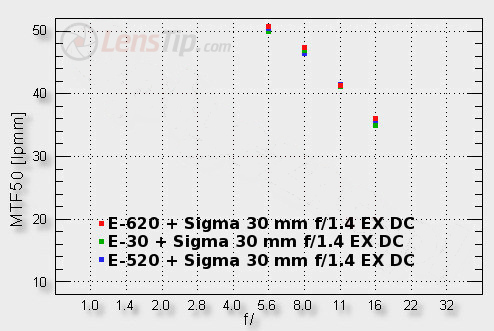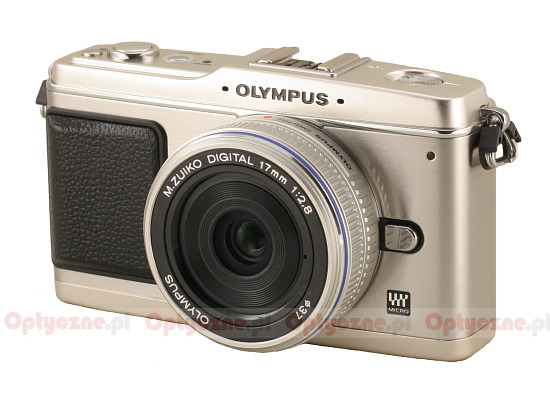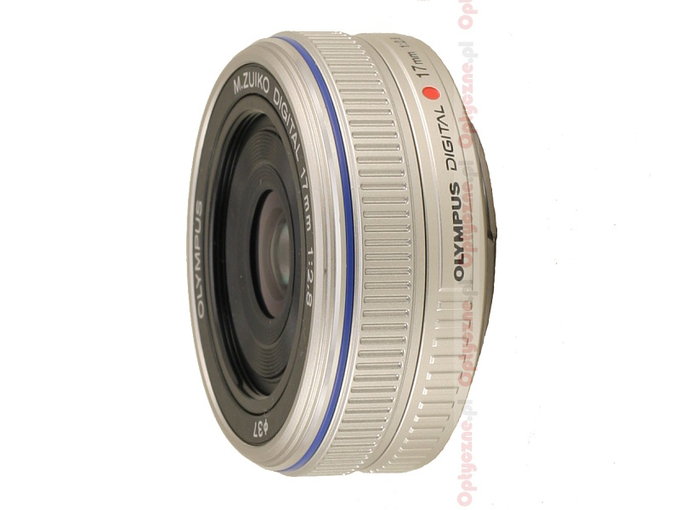Olympus M.Zuiko Digital 17 mm f/2.8
1. Introduction
In my opinion this particular premiere is scoring a bull’s-eye. If you buy E-P1, buy it with a lens of these dimensions and these parameters. Small, handy, not sticking out – perfect for every documentary; basically a return to the classical rangefinder age. At the same time we have a 65 degrees angle of view, which makes it possible for this lens to photograph almost everything and you just don’t want to take it off your camera.
In theory everything looks perfect, but what about practice? We have to think a little, here. We’ve always tried to conduct our lens tests on cameras which don’t limit optics too much with a too small amount of pixels, but at the same time one of the best in their class, offering mirror lock-up, use of a wired remote switch and not interfering in RAW files. Olympus optics tests have therefore been conducted on the E-3 model, lenses designed for APS-C/DX have been conducted on two-digit Canon and Pentax cameras and a three-digit Nikon one. Full-frame lenses are tested now using bodies like Canon 1Ds Mk III, Nikon D3x or Sony A900. How does E-P1 go with it? Can you use it to diligently test optics and have any comparison to results obtained on other bodies?
Please Support UsIf you enjoy our reviews and articles, and you want us to continue our work please, support our website by donating through PayPal. The funds are going to be used for paying our editorial team, renting servers, and equipping our testing studio; only that way we will be able to continue providing you interesting content for free. |
- - - - - - - - - - - - - - - - - - - - - - - - - - - - - - - - - - - - - - - - - - - - - - - -
We believe the answer to this last question is positive. E-P1 doesn’t have mirror lock-up for an apparent reason of not having a mirror, hence there are no vibrations caused by it. However, it offers an “Anti-Shock” option which was obviously used by us in combination with an original wired remote switch. The heart of the camera is a well-known 12-megapixel sensor of the 4/3 format from extensively tested E-30 and E-3 models, allowing recording images in RAW format, which we think are not improved too much. The question arises, can the results of a 12-megapixel sensor be directly compared to ones of a 10-megapixel sensor? Well, they can. When we conduct MTF50 measurements by virtue of unsharpened RAW files, the increase of pixels from 10 to 12 million doesn’t really cause noticeable improvement of MTF50 values. It’s worth to remember the results obtained on E-520, E-30 and E-620, for which one and the same lens was used – Sigma 1.4/30 mm.

As you can see, there are no measurable differences between a 10-megapixel E-520 sensor and 12-megapixel sensors of the two other cameras. And that’s not because of a weak lens, as some may suggest. It’s because Sigma 1.4/30 is not weak, quite the opposite, around f/5.6 it is very sharp. We’ve ultimately explained the case, mounting lenses like ZD 25 mm f/2.8 or ZD 150 mm f/2.0 on Olympus E-3, E-30 and E-620, lenses which are everything but not weak. In all cases, whichever camera was used - a 10- or 12-megapixel, the maximum MTFs, obtained at apertures free from optical aberrations, reached just over 50 lpmm.
If then Olympus didn’t do anything funny with the E-P1 sensor, compared to E-30 and E-620 – and we have no reasons to suspect they did – the results of lens tests obtained using E-P1 can be directly compared to those of E-3. Let’s get to the heart of the matter, then!
The lens for tests was lent by Olympus Poland.
Information about our review method can be read in our article “How do we test lenses?"
 |







